ASUS Pro B660M-C D4-CSM Basic Build
Starting the build off, we are using the Intel Core i5-12500. In the corporate desktop market, the Core i5 is very popular, and we have been looking at the Core i5-_500 lines for years, even in the low-TDP versions.
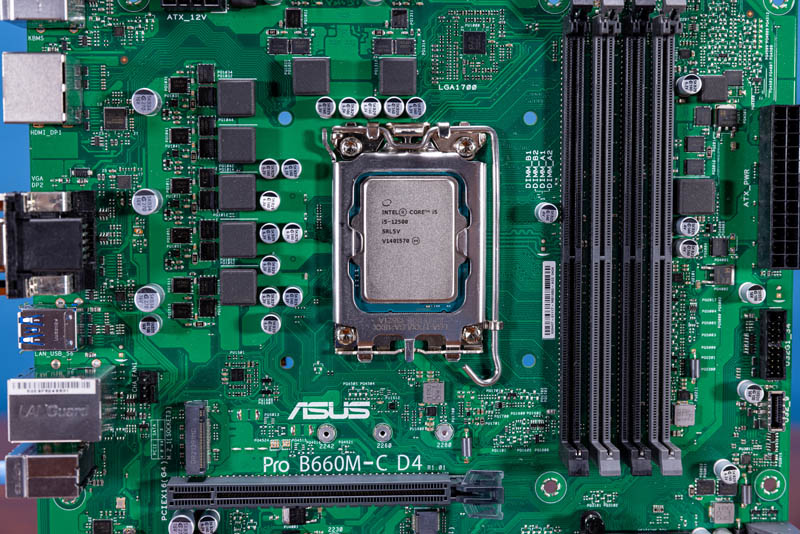
Next, we have memory. Since we are on DDR4 memory, we are using 32GB DIMMs. Most corporate builds will use 8-32GB of total memory, but we wanted higher capacity for later in the build process.
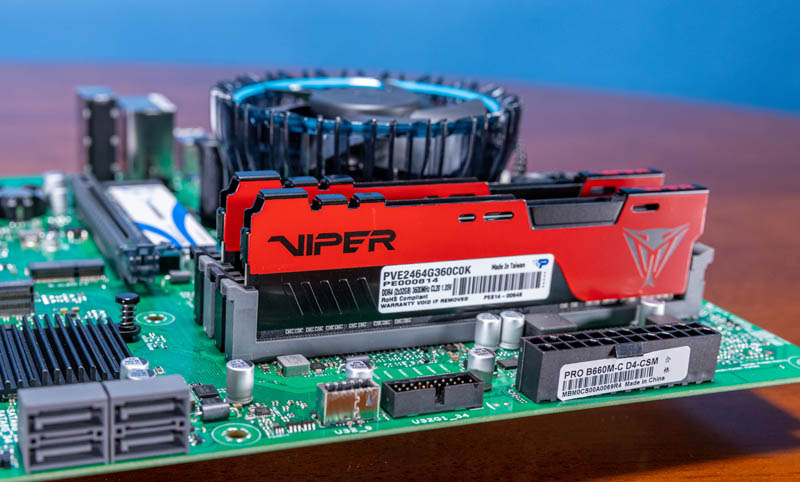
One thing we are also using is the stock Intel cooler. On the consumer side, folks tend to use higher TDP CPUs, and spend a lot on coolers. In this class of corporate desktop PCs, a “good enough” stock cooler on the 65W TDP parts is very common because it is a very low incremental cost.
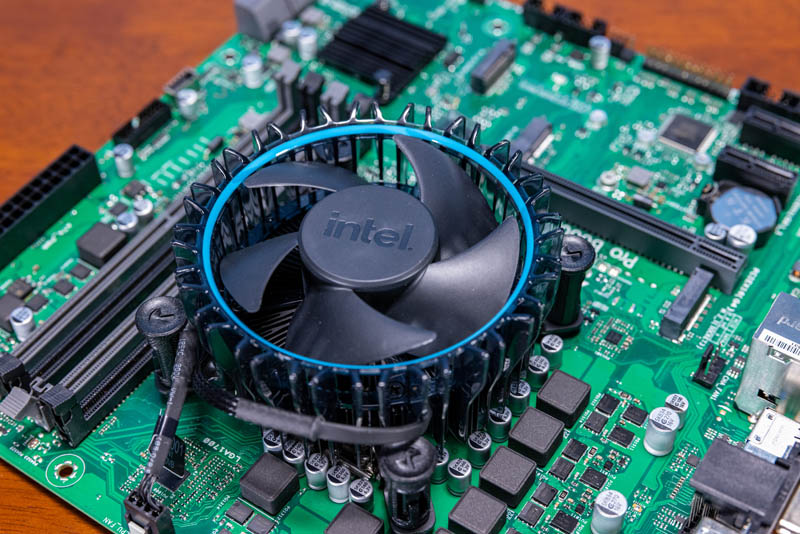
For the SSD, we have a Sabrent QLC 1TB drive. We see some extremely poor performing SSDs both PCIe Gen3 and Gen4 in the corporate PC space. This is certainly not higher-end, but for many office workloads, once storage moves to SSDs, it is going to be enough. The lower cost and power consumption of this drive were the key factors in using it over others we have.
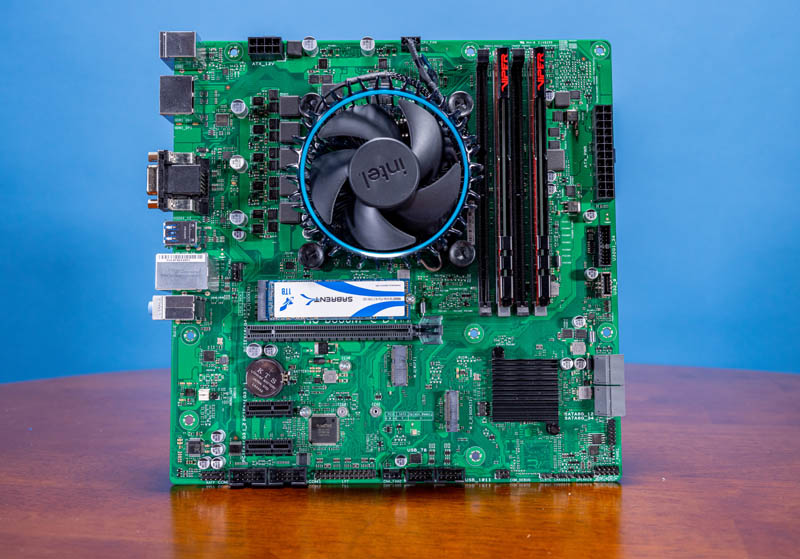
For the chassis, we have the Fractal Node 804 chassis. This is a fairly large chassis, that is solely there because we need space for a later part of the build process.
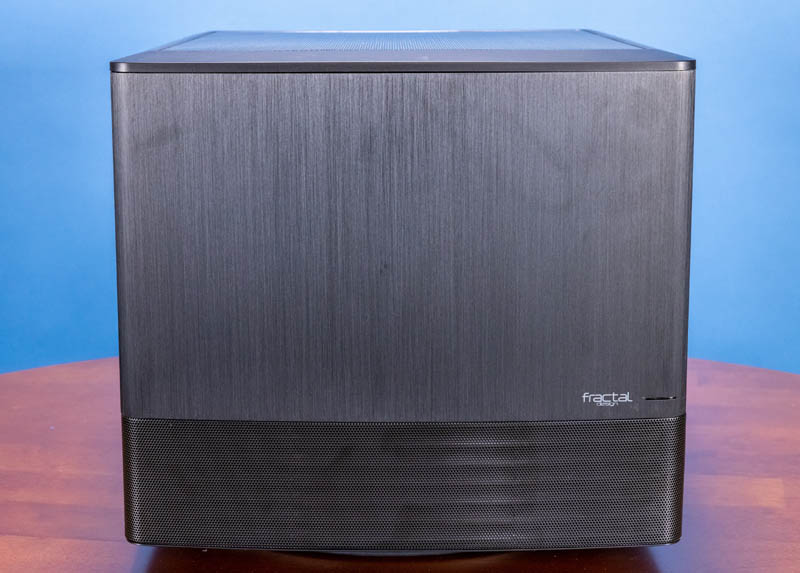
Getting the basic corporate PC build into the chassis was as easy as dropping it in and adding power and I/O cables.
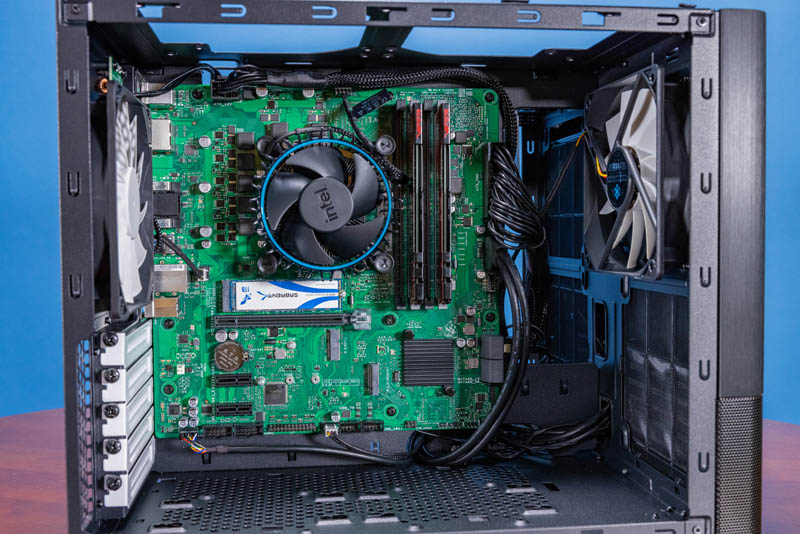
One can see that we have a lot of extra room in the chassis that we will fill soon.
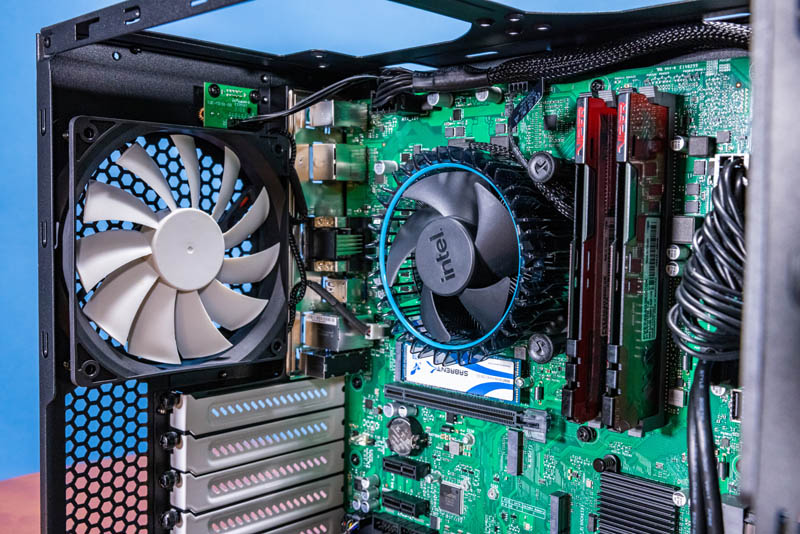
Something that would have been nice is if the motherboard had more than three fan headers. In a normal build, pictured below, this is enough. The chassis, however, has a fan for the hard drives behind this section, and we had to feed power from the PSU and fan controller because we did not have an extra motherboard port.

Here is that section, and you can probably guess what we are going to do as we make this build more exciting.

Here is the rear of the system just for completeness and in the form that we are going to look at next.

Next, let us make this build more fun.




Any ideas about powerusage vs more “gaming/consumer” orientated mainboards?
re: sata card
Recommend additional fan for cooling sata card chip.
(Mine could work for 5 day of constant formatting or random access of multiple hdds, but fail (disk not attached) after 6 hours of realtime use of moderate sequential file writes with one hdd)
Hdds, and not consumer fans, are loud, imo.
Already with super wepyc you were warned of low air flow for io cards, also nonrack built.
Would be interesting report: the stability of setup, and if used for 24/7 or not.
It also seems that here 4 fans for hdds could be installed (no top cover anymore though, 2 if top cover remains) in a ghetto version with hdd temp concerns.
Do business build their own PC’s? Asus board looks so ugly. Can’t remember the last time they made ugly board. Lol
Imo it’s waiting for the W680 motherboards, such as by Asrock in various formats and also SUperMicro announced some.
Due to competition by AMD, Intel has finallly moved to unlock full ECC on their 12th gen core series chips when used in combination with a W680 motherboard (so still some segmentation). But it means we finally get ECC on this cheaps. The only other workstation chip by intel right now is the W3300 series, which is at a far different pricepoint and offers way lower IPC. (obviously it has some very high end workstation features). Other than that the W1300 series is a bit of a joke, with most manufacturers seemed to have skipped W580 motherboards entirely.
So bottomline, W680 with Alder-Lake S CPUs are going to offer full ECC support with core chips like the I7 12700K etc. Those cheaps offer very good performance and have quite a few PCIE 4.0 lanes when considering the CPU and chipset lanes combined. Very good entry to mid-level workstations. I am really looking forward to that.
Hurray for comptetition!
Why don’t You test vPro capability? I wonder how it is working in this motherboard and what I can require for this